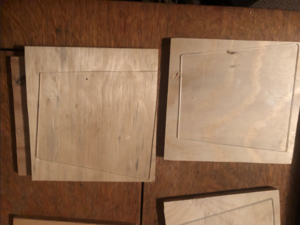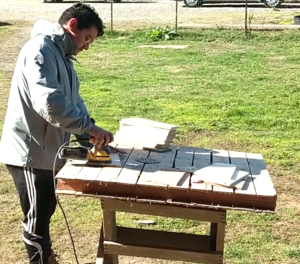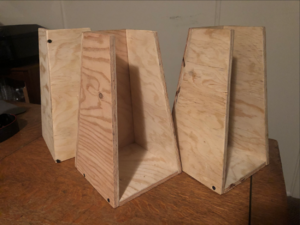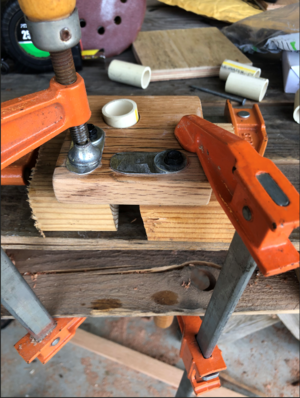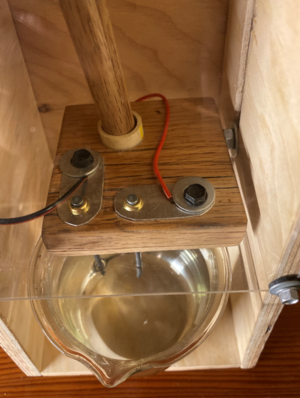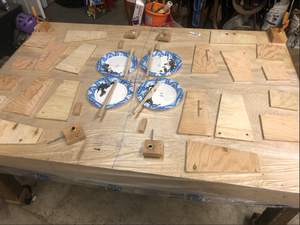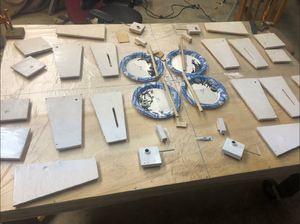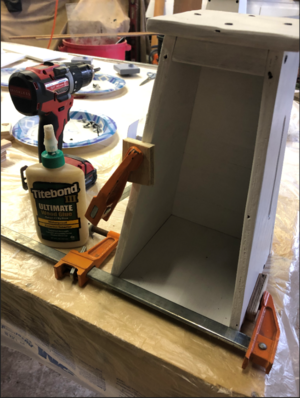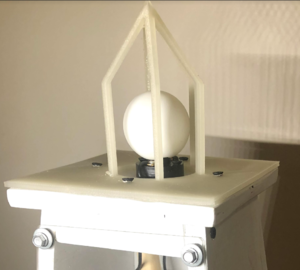(→Costs) |
m (Standardize wikitext) |
||
| (86 intermediate revisions by 8 users not shown) | |||
| Line 1: | Line 1: | ||
[[File:LH2.8.JPG|thumb|350px|right|One of four Lighthouse Conductivity Meters constructed for Six Rivers Charter High School]] | |||
==Abstract== | == Abstract == | ||
In Fall 2019, Six Rivers Charter School (Arcata, CA) has a conductivity probe that no longer works, is rusty, and a shock hazard if it is functional. Team Current Wave was tasked with developing a new qualitative data display that would guide students to understand the basic understanding conductivity through a liquid. Over the past semester, the team created a lighthouse probe to help not only facilitate learning with the student, but also to be engaging, aesthetically pleasing, and safe. The team was also asked to make replications that will help facilitate lab in groups of 4-5 instead of all the students sharing a single instrument. | |||
== Background == | == Background == | ||
The Current Wave Conductivity Probe is a device meant to provide educational value regarding the conductivity of various liquids for the students of Six Rivers Charter School. Team Current Wave will be working directly under Professor Morago, who not only is a professor in the HSU School of Education, but works as a teacher at Six Rivers Charter School. | |||
== Problem statement and criteria == | == Problem statement and criteria == | ||
The objective of this design project is to produce a conductivity probe for the use of Six Rivers Charter School in Arcata, CA. The chemistry department will use the probe to measure the conductivity of various liquids, as well as use the probe as a teaching mechanism for students. Therefore, it is essential to design a conductivity probe that is not only accurate, but that also facilitates learning for the students, can be handled by inexperienced users without easily breaking, and can provide easy usability. The goals and criteria for this design will be determined by the clientele at Six Rivers Charter School. | |||
{| class="wikitable sortable" | {| class="wikitable sortable" | ||
! | |+ Table-1: Criteria and Constraints | ||
! Criteria | |||
! Weight | |||
! Constraints | |||
|- | |- | ||
| | | Safety | ||
| align="center"|10 | |||
|align=" | | Must not physically injure the user (including shocks, cuts, etc) | ||
| | |||
|- | |- | ||
| | | Level of Engagement | ||
|align=" | | align="center"|9 | ||
| | | Must be a visually pleasing display that captures the attention of the user/class | ||
|- | |- | ||
| | | Ease of Repair | ||
|align=" | | align="center"|8 | ||
| | | No more than a one page long repair sheet, no background knowledge required for repair | ||
|- | |- | ||
| | | Durability | ||
|align=" | | align="center"|7 | ||
|align=" | | Lasts longer than 5 years (other than replacement bulbs) | ||
|- | |- | ||
| | | Cost | ||
|align=" | | align="center"|7 | ||
| <$50 per probe | |||
|- | |||
| Feasibility | |||
| align="center"|7 | |||
| Simple enough to be built by undergraduate students within time constraints of the semester. | |||
|- | |||
| Educational Value | |||
| align="center"|5 | |||
| Must be able to teach students basic conductivity principles at a high school level | |||
|- | |||
| Aesthetic | |||
| align="center"|4 | |||
| Must be more visually appealing than last probe. | |||
|- | |||
| Inspirational Value | |||
| align="center"|4 | |||
| Must instill a curiosity in class that may lead students to having a higher level of interest in science. | |||
|} | |} | ||
[[File:Captureexplainedlighthouse.PNG|center|A depiction of the major components of the Lighthouse]] | |||
The Lighthouse Conductivity Meter is a probe used for measuring the conductivity of a liquid solution. The design consists of a wooden body with a 3D printed, PLA rooftop housing. Inside is a probe block that slides along a dowel to lower two probes into a solution. The probes are connected to an electrical circuit that lights a lightbulb at the top of The Lighthouse if the solution has a enough electrolytes to carry the current across the solution. The bulb increases in brightness with increasing conductivity. | |||
== Description of final project == | |||
The Lighthouse Conductivity Meter is a probe used for measuring the conductivity of a liquid solution. The design consists of a wooden body with a 3D printed, PLA rooftop housing. Inside is a probe block that slides along a dowel to lower two probes into a solution. The probes are connected to an electrical circuit that lights a lightbulb at the top of The Lighthouse if the solution has a enough electrolytes to carry the current across the solution. The bulb increases in brightness with increasing conductivity. | |||
[[File:4LighthouseMeters.jpg|center|thumb|An image of all four of the completed Lighthouse Conductivity Probes]] | |||
== | == Operation and Maintenance == | ||
To operate the Lighthouse Conductivity Meter, first ensure that the galvanized nail electrodes are making metal contact with the probe block. Do this with the meter unplugged to avoid any small shocks. Next, plug in the meter, and place a solution in the base. Unscrew the wingnut on the side one full turn, and use the handle to lower the electrodes into solution. After observing any luminosity, raise the probe block back up and re-tighten the wingnut. Unplug the meter, and wipe down the electrodes to minimize rust build up. | |||
Team Current Wave has uploaded an instructional video on how to use and maintain. | |||
{{Video|C3CsuMX_TZo}} | |||
== Prototyping == | |||
[[File:Current Wave Prototype1.PNG|left|thumb|Prototype 1 was built out of cardboard to assess the shape and size of the body and look at options for dispersing light. After construction it was determined that the body was too small for a hand to place a beaker of solution within the body, and so dimensions were increased for the final model.]] | |||
[[File:Current Wave Prototype2.PNG|thumb|Prototype 2 was built out of plywood to assess the specifications and functionality of the probe body and probe slider components. After construction it was determined that the sliding components needed a low-friction surface to slide on. The final low-friction material chosen was a thin layer of felt.]] | |||
{{Clear}} | |||
== Costs == | |||
{| class="wikitable sortable" | |||
! Quantity | |||
! Material | |||
! Source | |||
! Cost ($) | |||
! Total ($) | |||
|- | |||
| 2 | |||
| Bolt | |||
| Aces | |||
| align="right"| 0.65 | |||
| align="right"| 1.42 | |||
|- | |||
| 4 | |||
| Washer | |||
| Ace | |||
| align="right"| 0.23 | |||
| align="right"| 1.00 | |||
|- | |||
| 2 | |||
| Nut | |||
| Aces | |||
| align="right"| 0.25 | |||
| align="right"| 0.54 | |||
|- | |||
| 1 | |||
| Acrylic Knife | |||
| Amazon | |||
| align="right"| 7.99 | |||
| align="right"| 8.67 | |||
|- | |||
| 1 | |||
| Acrylic Sheet | |||
| Ace | |||
| align="right"| 14.99 | |||
| align="right"| 16.39 | |||
|- | |||
| 1 | |||
| Lightbulb | |||
| Amazon | |||
| align="right"| 4.99 | |||
| align="right"| 5.39 | |||
|- | |||
| 1 | |||
| 2.1 x 5.5 Wood | |||
| Ace | |||
| align="right"| 1.50 | |||
| align="right"| 1.61 | |||
|- | |||
| 1 | |||
| Dowel | |||
| Ace | |||
| align="right"| 3.99 | |||
| align="right"| 4.29 | |||
|- | |||
| 1 | |||
| Allthread rod | |||
| Ace | |||
| align="right"| 2.89 | |||
| align="right"| 0.20 | |||
|- | |||
| 1 | |||
| Aluminum Sheet Metal | |||
| Ace | |||
| align="right"| 8.99 | |||
| align="right"| 9.79 | |||
|- | |||
| 1 | |||
| Latching Tote | |||
| Ace | |||
| align="right"| 11.99 | |||
| align="right"| 12.99 | |||
|- | |||
| 1 | |||
| 1 W LED nightlight | |||
| Ace | |||
| align="right"|5.99 | |||
| align="right"|6.49 | |||
|- | |||
| 1 | |||
| Socket Phen | |||
| Ace | |||
| align="right"|5.49 | |||
| align="right"|5.99 | |||
|- | |||
| 4 | |||
| Bulk Fasteners | |||
| Ace | |||
| align="right"|0.50 | |||
| align="right"|2.20 | |||
|- class="sortbottom" | |||
| colspan="4" align="right" | '''Total Cost''' | |||
| align="right"| '''''' | |||
|} | |||
== Testing Results == | |||
Team Current Wave conducted three unique material testing experiments to select the best possible canditates for probe metal type and light.The first two eperiments were a series of oxidation reduction reactions. In the first experiment, various metal washers were submerged un a conductive solution plugged into a 9V power source for 30 minutes. Due to the large surface area to volume ratio, all the metal anodes completely oxidzed with the exception of galvanized steel. This experiment was then replicated again with metal screws of various types because they have a better surface area to volume ratio, thus, oxidize at a slower rate. Furthermore, a voltmeter was attached to the electrodes to compare the voltage at the beginning to the end because oxidation generally lowers conductive capacity. Again, every anode experienced mass reduction and change in voltage capacity with the exception of galvanized steel. Thus, galvanized steel was chosen to be the probe material for the final design. Using the newly installed galvanized steel probes, we tested a series of lights in 4 different molar solutions to find an optimal lumnosity range for a quality qualitative display. Results revealed the most reactive bulb that survived all 4 solutions was the 3.8V 0.3A light bulb for the final design. | |||
== How to build == | |||
{{Step | |||
| number = 1 | |||
| text = Make the initial plywood and plexiglas cuts | |||
| image = File:Current wave Plywood cuts 1.png | |||
| caption = Backpack frame bike trailer | |||
}} | |||
{{Step | |||
| number = 2 | |||
| text = Sand all plywood surfaces | |||
| image = File:Current_Wave_Sanding.PNG | |||
| caption = Sanding all plywood surfaces | |||
}} | |||
{{Step | |||
| number = 3 | |||
| text = Assemble bodies with the use of pre-drilled holes and wood screws | |||
| image = File:Current_Wave_Body_Assembly.PNG | |||
| caption = Assembly of plywood bodies | |||
}} | |||
{{Step | |||
| number = 4 | |||
| text = Assemble probe block -- drill holes for probes, PVC slider | |||
| image = File:Current_Wave_Probe_Block_1.PNG | |||
| caption = Allowing the glue to set in the probe block | |||
}} | |||
{{Step | |||
| number = 5 | |||
| text = Assemble probe block hardware and fasten wiring between washer and stainless steel cutout | |||
| image = File:Current_Wave_Block_Wiring_1PNG.PNG | |||
| caption = Probe block wiring | |||
}} | |||
{{Step | |||
| number = 6 | |||
| text = Disassemble components and prep for paint | |||
| image = File:Current_Wave_Pre_Paint.PNG | |||
| caption = Laying out wooden components for coating of paint | |||
}} | |||
{{Step | |||
| number = 7 | |||
| text = Coat components in protective, water-resistant coating of paint | |||
| image = File:Current_Wave_Post_Paint.PNG | |||
| caption = Letting the wooden components dry | |||
}} | |||
{{Step | |||
| number = 8 | |||
| text = Reassemble components with the addition of wood glue at the joints | |||
| image = File:Current_Wave_Wood_Glue.PNG | |||
| caption = Reassembly after paint has been applied | |||
}} | |||
=== | {{Step | ||
| number = 9 | |||
| text = Apply the light socket, light bulb and the 3-D printed roof fixture to the top of the body | |||
| image = File:Current_Wave_Lighthouse_Roof.PNG | |||
| caption = Lighthouse light fixture | |||
}} | |||
== Maintenance == | |||
Introduce this maintenance section. | |||
Maintenance on The Lighthouse is expected to be at a minimum. The bulb is expected to last at least 3-5 years, after which a replacement can be plugged into the housing. There are x extra bulbs for the probes, after which a pack of ten can be bought for $5.90. Corrosion is not anticipated to be an issue, particularly with the amount of usage that the probes will get per year. If any corrosion does take place on the probes over time, a new 16 penny galvanized nail can be inserted for the cost of about $.10 each. If the probes and the bulb were replaced at most every 3 years, the yearly cost of maintenance would be $.33. No other general maintenance costs are expected to be needed for The Lighthouse. | |||
=== Schedule === | |||
;Daily | |||
* After each use unplug the conductivity probe and wipe down any solution with a towel. | |||
* When out of use, keep in a dark dry environment to avoid wear and oxidation. | |||
== Troubleshooting == | == Troubleshooting == | ||
This is only how to troubleshoot basic operation. For complex issues, | This is only how to troubleshoot basic operation. For complex issues, contact Marco at mag233@humboldt.edu. | ||
{| class="wikitable" | {| class="wikitable" | ||
| Line 131: | Line 275: | ||
|- | |- | ||
| | | Light does not turn on | ||
| | | Unplug the power supply cord and gently twist the nails (that act as the probes) in a downward motion until the heads of the nails are fitting snugly against probe block. Plug the power supply cord back in. If issue continues, first make sure the other end of the power supply cord is plugged into a working wall outlet. If there are still issues, check the solution the electricity is going through, it may not be conductive enough. Lastly, if it still does not turn on, try using another lightbulb. | ||
|- | |- | ||
| | | Probes corrode | ||
| | | Bring the lever to the bottom of the lighthouse and pull push out the nails from the block. You can then replace them easily with new galvanized steel nails. | ||
|} | |} | ||
==Discussion and next steps== | == Discussion and next steps == | ||
The finished Lighthouses are sturdy, visually appealing product that will serve its purpose at Six Rivers Charter School. The Lighthouse provides a safer and more visually appealing product than what was previously used. Current Wave was pleased with the final product and are glad to have served the Arcata community. Current Wave hopes to inspires students to learn more about STEM related topics such as conductivity, oxidation and reduction reactions, and chemistry and engineering in general. The next steps for the lighthouses are for them to be painted by Six Rivers Charter School students. | |||
== Suggestions for future changes == | == Suggestions for future changes == | ||
Although the project hit all the necessary requirements for the project, there is always room for improvement. If this project were to be developed further, our team would find a more durable, cost effective, upcycled plastic substitute for the plywood body. Further more, the team would create a custom handle bent upwards for the slider so the dowel would not need to be secured at an angle for aesthetic purposes. | |||
{{Page data}} | |||
{{ | |||
[[Category: | [[Category:Engr205 Introduction to Design]] | ||
[[Category:Six Rivers Charter School]] | |||
[[Category:Electricity]] | |||
[[Category:Devices]] | |||
Latest revision as of 19:12, 22 August 2023
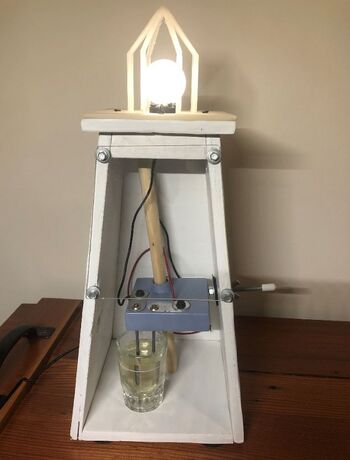
Abstract[edit | edit source]
In Fall 2019, Six Rivers Charter School (Arcata, CA) has a conductivity probe that no longer works, is rusty, and a shock hazard if it is functional. Team Current Wave was tasked with developing a new qualitative data display that would guide students to understand the basic understanding conductivity through a liquid. Over the past semester, the team created a lighthouse probe to help not only facilitate learning with the student, but also to be engaging, aesthetically pleasing, and safe. The team was also asked to make replications that will help facilitate lab in groups of 4-5 instead of all the students sharing a single instrument.
Background[edit | edit source]
The Current Wave Conductivity Probe is a device meant to provide educational value regarding the conductivity of various liquids for the students of Six Rivers Charter School. Team Current Wave will be working directly under Professor Morago, who not only is a professor in the HSU School of Education, but works as a teacher at Six Rivers Charter School.
Problem statement and criteria[edit | edit source]
The objective of this design project is to produce a conductivity probe for the use of Six Rivers Charter School in Arcata, CA. The chemistry department will use the probe to measure the conductivity of various liquids, as well as use the probe as a teaching mechanism for students. Therefore, it is essential to design a conductivity probe that is not only accurate, but that also facilitates learning for the students, can be handled by inexperienced users without easily breaking, and can provide easy usability. The goals and criteria for this design will be determined by the clientele at Six Rivers Charter School.
| Criteria | Weight | Constraints |
|---|---|---|
| Safety | 10 | Must not physically injure the user (including shocks, cuts, etc) |
| Level of Engagement | 9 | Must be a visually pleasing display that captures the attention of the user/class |
| Ease of Repair | 8 | No more than a one page long repair sheet, no background knowledge required for repair |
| Durability | 7 | Lasts longer than 5 years (other than replacement bulbs) |
| Cost | 7 | <$50 per probe |
| Feasibility | 7 | Simple enough to be built by undergraduate students within time constraints of the semester. |
| Educational Value | 5 | Must be able to teach students basic conductivity principles at a high school level |
| Aesthetic | 4 | Must be more visually appealing than last probe. |
| Inspirational Value | 4 | Must instill a curiosity in class that may lead students to having a higher level of interest in science. |
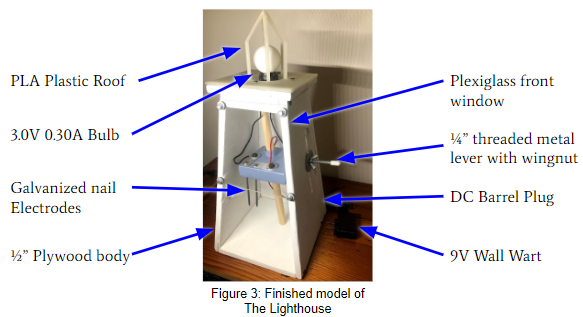
The Lighthouse Conductivity Meter is a probe used for measuring the conductivity of a liquid solution. The design consists of a wooden body with a 3D printed, PLA rooftop housing. Inside is a probe block that slides along a dowel to lower two probes into a solution. The probes are connected to an electrical circuit that lights a lightbulb at the top of The Lighthouse if the solution has a enough electrolytes to carry the current across the solution. The bulb increases in brightness with increasing conductivity.
Description of final project[edit | edit source]
The Lighthouse Conductivity Meter is a probe used for measuring the conductivity of a liquid solution. The design consists of a wooden body with a 3D printed, PLA rooftop housing. Inside is a probe block that slides along a dowel to lower two probes into a solution. The probes are connected to an electrical circuit that lights a lightbulb at the top of The Lighthouse if the solution has a enough electrolytes to carry the current across the solution. The bulb increases in brightness with increasing conductivity.
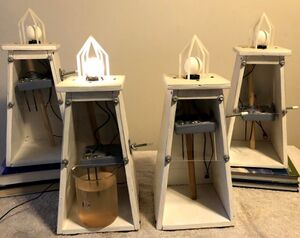
Operation and Maintenance[edit | edit source]
To operate the Lighthouse Conductivity Meter, first ensure that the galvanized nail electrodes are making metal contact with the probe block. Do this with the meter unplugged to avoid any small shocks. Next, plug in the meter, and place a solution in the base. Unscrew the wingnut on the side one full turn, and use the handle to lower the electrodes into solution. After observing any luminosity, raise the probe block back up and re-tighten the wingnut. Unplug the meter, and wipe down the electrodes to minimize rust build up.
Team Current Wave has uploaded an instructional video on how to use and maintain.
Prototyping[edit | edit source]
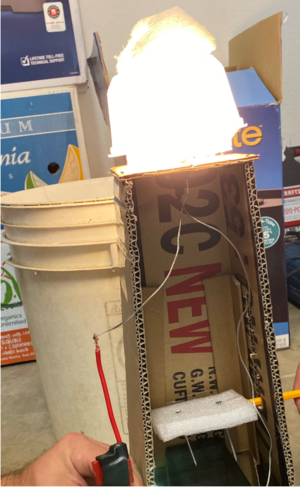
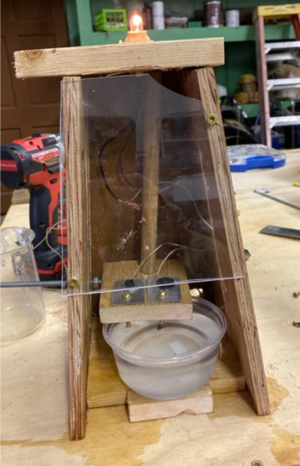
Costs[edit | edit source]
| Quantity | Material | Source | Cost ($) | Total ($) |
|---|---|---|---|---|
| 2 | Bolt | Aces | 0.65 | 1.42 |
| 4 | Washer | Ace | 0.23 | 1.00 |
| 2 | Nut | Aces | 0.25 | 0.54 |
| 1 | Acrylic Knife | Amazon | 7.99 | 8.67 |
| 1 | Acrylic Sheet | Ace | 14.99 | 16.39 |
| 1 | Lightbulb | Amazon | 4.99 | 5.39 |
| 1 | 2.1 x 5.5 Wood | Ace | 1.50 | 1.61 |
| 1 | Dowel | Ace | 3.99 | 4.29 |
| 1 | Allthread rod | Ace | 2.89 | 0.20 |
| 1 | Aluminum Sheet Metal | Ace | 8.99 | 9.79 |
| 1 | Latching Tote | Ace | 11.99 | 12.99 |
| 1 | 1 W LED nightlight | Ace | 5.99 | 6.49 |
| 1 | Socket Phen | Ace | 5.49 | 5.99 |
| 4 | Bulk Fasteners | Ace | 0.50 | 2.20 |
| Total Cost | ' | |||
Testing Results[edit | edit source]
Team Current Wave conducted three unique material testing experiments to select the best possible canditates for probe metal type and light.The first two eperiments were a series of oxidation reduction reactions. In the first experiment, various metal washers were submerged un a conductive solution plugged into a 9V power source for 30 minutes. Due to the large surface area to volume ratio, all the metal anodes completely oxidzed with the exception of galvanized steel. This experiment was then replicated again with metal screws of various types because they have a better surface area to volume ratio, thus, oxidize at a slower rate. Furthermore, a voltmeter was attached to the electrodes to compare the voltage at the beginning to the end because oxidation generally lowers conductive capacity. Again, every anode experienced mass reduction and change in voltage capacity with the exception of galvanized steel. Thus, galvanized steel was chosen to be the probe material for the final design. Using the newly installed galvanized steel probes, we tested a series of lights in 4 different molar solutions to find an optimal lumnosity range for a quality qualitative display. Results revealed the most reactive bulb that survived all 4 solutions was the 3.8V 0.3A light bulb for the final design.
How to build[edit | edit source]
Maintenance[edit | edit source]
Introduce this maintenance section.
Maintenance on The Lighthouse is expected to be at a minimum. The bulb is expected to last at least 3-5 years, after which a replacement can be plugged into the housing. There are x extra bulbs for the probes, after which a pack of ten can be bought for $5.90. Corrosion is not anticipated to be an issue, particularly with the amount of usage that the probes will get per year. If any corrosion does take place on the probes over time, a new 16 penny galvanized nail can be inserted for the cost of about $.10 each. If the probes and the bulb were replaced at most every 3 years, the yearly cost of maintenance would be $.33. No other general maintenance costs are expected to be needed for The Lighthouse.
Schedule[edit | edit source]
- Daily
- After each use unplug the conductivity probe and wipe down any solution with a towel.
- When out of use, keep in a dark dry environment to avoid wear and oxidation.
Troubleshooting[edit | edit source]
This is only how to troubleshoot basic operation. For complex issues, contact Marco at mag233@humboldt.edu.
| Problem | Suggestion |
|---|---|
| Light does not turn on | Unplug the power supply cord and gently twist the nails (that act as the probes) in a downward motion until the heads of the nails are fitting snugly against probe block. Plug the power supply cord back in. If issue continues, first make sure the other end of the power supply cord is plugged into a working wall outlet. If there are still issues, check the solution the electricity is going through, it may not be conductive enough. Lastly, if it still does not turn on, try using another lightbulb. |
| Probes corrode | Bring the lever to the bottom of the lighthouse and pull push out the nails from the block. You can then replace them easily with new galvanized steel nails. |
Discussion and next steps[edit | edit source]
The finished Lighthouses are sturdy, visually appealing product that will serve its purpose at Six Rivers Charter School. The Lighthouse provides a safer and more visually appealing product than what was previously used. Current Wave was pleased with the final product and are glad to have served the Arcata community. Current Wave hopes to inspires students to learn more about STEM related topics such as conductivity, oxidation and reduction reactions, and chemistry and engineering in general. The next steps for the lighthouses are for them to be painted by Six Rivers Charter School students.
Suggestions for future changes[edit | edit source]
Although the project hit all the necessary requirements for the project, there is always room for improvement. If this project were to be developed further, our team would find a more durable, cost effective, upcycled plastic substitute for the plywood body. Further more, the team would create a custom handle bent upwards for the slider so the dowel would not need to be secured at an angle for aesthetic purposes.

